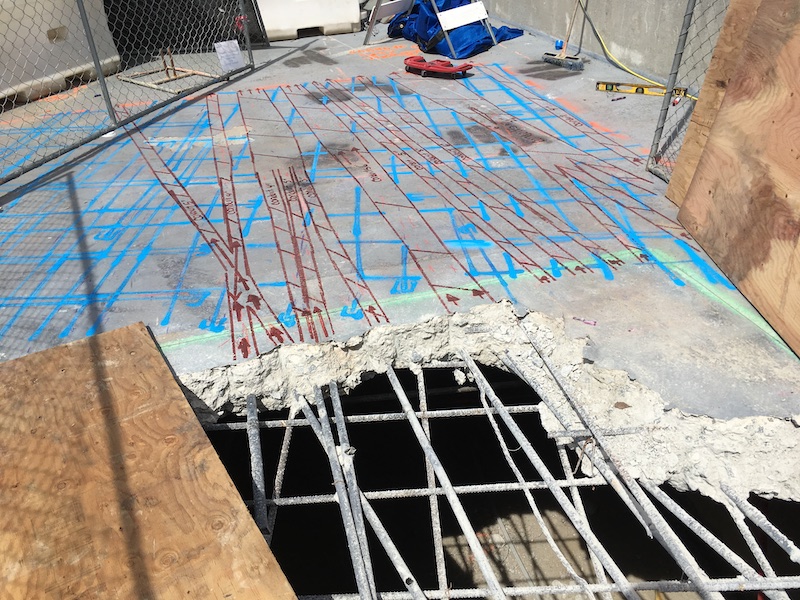Unveil the Transformative Power of Concrete Scanning in Making The Most Of Efficiency and Security
Concrete scanning has actually emerged as a vital tool in the construction sector, using unmatched advantages in enhancing project efficiency and making certain safety standards. The transformative power of concrete scanning exists in its ability to provide comprehensive insights and real-time information, reinventing just how jobs are planned and executed.
Importance of Concrete Scanning
Making certain the structural stability and safety and security of building tasks begins with the essential step of performing detailed concrete scanning. Concrete scanning is a non-destructive technique used to identify and map subsurface aspects within concrete frameworks.
Furthermore, concrete scanning assists in enhancing task timelines and spending plan by staying clear of unforeseen expenses and hold-ups that might emerge due to unanticipated blockages within the concrete. Inevitably, investing in detailed concrete scanning is a proactive technique that improves both effectiveness and safety and security in building and construction tasks.
Just How Concrete Scanning Works
Concrete scanning operates as an important device in construction projects by utilizing innovative modern technologies to find and map subsurface components without creating architectural damage. Ground Penetrating Radar (GPR) and Electromagnetic Induction (EMI) are 2 key methods made use of in concrete scanning.
Throughout the scanning procedure, the data collected is evaluated in real-time, enabling instant recognition of potential dangers or barriers below the surface area. By utilizing these sophisticated technologies, concrete scanning considerably minimizes the risk of pricey problems and injuries on building sites.
Advantages of Concrete Scanning
Utilizing innovative scanning technologies in construction tasks provides a plethora of benefits, enhancing both effectiveness and safety on-site. One of the primary advantages of concrete scanning is the capability to detect and find ingrained items such as rebar, post-tension cords, and avenues accurately. By determining these aspects prior to drilling or reducing right into concrete frameworks, the danger of unintended strikes is considerably minimized, avoiding possible injuries to employees and damages to the structure itself. Concrete scanning assists in planning and developing more successfully, as it supplies exact details regarding the area and deepness of structural elements.

Instance Studies: Concrete Scanning Success

In one more situation, a building and construction company used 3D concrete scanning to assess the problem old concrete structures in a historical structure. The in-depth scans offered valuable insights right into the extent of wear and tear and aided prioritize upkeep efforts properly. By proactively resolving areas of concern recognized with scanning, the company was able to extend the lifespan of the structure and ensure resident safety.
These study emphasize the transformative power of concrete scanning in improving efficiency, precision, and safety and security in construction jobs.
Executing Concrete Scanning in Projects
Carrying out sophisticated scanning technologies throughout construction projects has actually come to be increasingly necessary for enhancing precision and safety and security. By incorporating concrete scanning right into job planning and execution, construction groups can recognize potential hazards, such as rebar or post-tension wires, hidden within concrete structures. This proactive method reduces the risk of accidents, hold-ups, and expensive rework, eventually causing extra reliable project timelines and budget plans.
To carry out concrete scanning properly, project supervisors must collaborate carefully with experienced scanning experts to determine the most ideal scanning techniques for the specific project demands. Engaging scanning specialists from the early stages of a project allows the team to develop comprehensive scanning strategies that resolve crucial areas of issue reference and make sure complete data collection.
In addition, incorporating concrete scanning into routine job operations can enhance decision-making procedures, as real-time scan data provides prompt insights into the condition of concrete frameworks - Concrete Scanning. This data-driven strategy helps with informed analytical and makes it possible for groups to make adjustments promptly, promoting a society of effectiveness and security throughout the job lifecycle

Conclusion
To conclude, concrete scanning plays a crucial duty in enhancing performance and safety and security in building jobs. By making use of innovative modern technology to identify and map out underlying structures within concrete, this procedure assists to stop pricey errors, make sure architectural integrity, and decrease dangers on website. With the capacity to discover surprise aspects and give exact data, concrete scanning verifies to be a beneficial device for enhancing task results and making best use of general success.
Concrete scanning is a non-destructive technique made use of to discover and map subsurface elements within concrete structures. Additionally, concrete scanning aids in maximizing task timelines and budget by preventing unexpected expenses and delays that may occur due to unexpected blockages within the concrete. One noteworthy case research study involves a large restoration job where concrete scanning played an essential duty in ensuring job success.In one more situation, a building business used 3D concrete scanning to examine the condition of maturing concrete structures in a historic structure. By incorporating concrete scanning into job preparation and implementation, building and construction groups can determine my explanation prospective risks, such as rebar or post-tension cords, concealed within concrete structures.